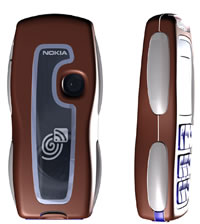3, the first 3G network in the UK, are further enhancing their content offering by announcing a deal with Associated Press Television News (APTN). APTN will provide the video show, “Entertainment Now” that will be released twice a week and cover ‘celebrity entertainment’. In their words, it will be “quirky and irreverent, poking fun at the rich and famous, and of course, the infamous.”
3 customers have two ways to pay for the content. At 50p per clip or they can watch as much video as they like by paying £5 per month for the “video value” add-on.
We spoke to Deanna Gullery, APTN’s New Product Marketing Manager about the deal. They currently sell a 24 minute version of Entertainment NOW (is it just us or is the capitalisation unnecessary?) that goes to air with a number of broadcasters in various countries on a weekly basis.
The 3 version will be a cut down version, primarily featuring celebrity interviews, calling on AP’s strong access to the stars. It will be edited in-house down to between 2 and 4 minutes, voiced over and releases on Tuesday and Thursday.
We think the 3 deal is an interesting example of a content creation company making the most of their assets – “Sweating your assets” as we believe the 80’s phrase for was. AP are all over the world (80 bureaux in 67 countries) shooting this type of material for ‘traditional’ media outlets anyway. Why not make the most of it and edit it together in to custom pieces? We’re strong believers in this type of approach.
We don’t think this is the kind of content that will drive people to join the 3 services, it’s more about maximising Average Revenue Per User (ARPU, in trade terms). Their current ARPU taking the first 7 months of this year is £43.22 per customer, per month.
 Siemens have announced the availability of a range of handsets that work with VoIP (Voice over IP) software, Skype. Simply by plugging the USB adapter into a computer running an updated version of Skype, home and business users will be able to make calls using a cordless handset. Calls to other Skype users will be free and calls to International landlines can be made at very low cost using SkypeOut.
Siemens have announced the availability of a range of handsets that work with VoIP (Voice over IP) software, Skype. Simply by plugging the USB adapter into a computer running an updated version of Skype, home and business users will be able to make calls using a cordless handset. Calls to other Skype users will be free and calls to International landlines can be made at very low cost using SkypeOut. Nokia has lifted the lid on the world’s first NFC (Near Field Communication) equipped mobile phone by adding the special NFC clip-on shell to their 3220, a tri-band camera phone that is available in two versions (Euro/Asia & America). With its build-in NFC shell, the phone is the latest step in the development of innovative products for mobile communications.
Nokia has lifted the lid on the world’s first NFC (Near Field Communication) equipped mobile phone by adding the special NFC clip-on shell to their 3220, a tri-band camera phone that is available in two versions (Euro/Asia & America). With its build-in NFC shell, the phone is the latest step in the development of innovative products for mobile communications.